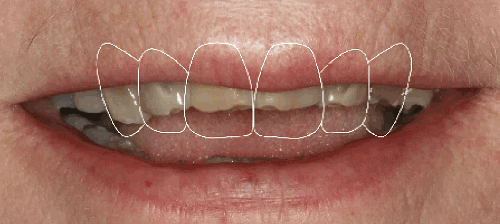
Overview
$1750.00
You've scanned your patient digitally and sent them on their way. Now you sit staring in awe at the impression on the computer screen. What next?
This course is designed for the novice to this new world of in-office 3D printing. Our goal is to get you going on some simple digital procedures with a relatively low entry point (free or low cost). You will learn to clean up your scans, put a base on them for printing, complete diagnostic setups, and make implant surgical guides. These have proven to be easy and quick ways to recover the cost of your 3D printer and have a blast along the way.
You will learn to use a few different computer programs and get hands on experience printing your own designs. Learn the whole process from design to cleaning up that printed product. This is a hands on course where you will be learning on your own computer how to manuever these programs. See below for recommendations on a capable computer.
DAY ONE - TOOTH SETUPS
Today is about learning the basics of 3D printing and then moving into tooth set-ups. We will use some 2D smile design concepts and see how we can overlay this to aid in our 3D setups.
1] Importing STL files into Meshmixer (generic CAD software for 3D printing)
2] Cleaning up scans to remove unwanted data
3] Adding a base to the scans to create a hollow model
4] Bringing the file into the 3D printer software to prepare for printing
5] Print your own model you just based up (will use tomorrow for our surgical guides)
6] Learn to set-up a single tooth in Meshmixer (with free tooth libraries)
7] Learn concepts of setting teeth for a larger esthetic case
8] Use these concepts to design a 2D setup
9] Take that 2D setup and use it to align things three dimensionally (see animation below)
10] Print that set-up as well to take home.

DAY TWO - SURGICAL GUIDES
Day two is focusing on using free implant planning software (Blue Sky Bio) to plan implant placement for a single implant and to fabricate a surgical guide for that implant. We will end the day learning about what else is possible with 3D printing, digital workflows, and other software programs you can consider.
1] Opening a CBCT in Blue Sky Plan
2] Importing and aligning the patient's STL
3] Placing a dental implant (review of implant planning principles)
4] Fabricating a surgical guide (see image below)
5] Adding windows to confirm the guide is seated and for irrigation
6] Exporting STLs
7] Review setting up an STL in printer's software
8] Print that surgical guide
9] Place a metal tube in the guide after cleaning it up
10] Learning about what else is possible when you are ready for more
Notes:
- This is a very hands-on computer course, not just a lecture. Come ready to work!
- You will not only need the software already installed, but will also need enough hardware power to keep up. Therefore, we highly recommend some minimum hardware requirements (if you don't want your computer holding you back)**:
- 16 GB RAM [I have 32 GB]
- 4 GB (or more) dedicated graphics card [I have 6 GB]
- Solid State Drive (SSD) are great for saving and opening these cases quickly
- Windows PCs tend to be better than Apple computers for this stuff [I've used both and prefer PCs]
BONUSES:
With this course, Blue Sky Bio has some generous discounts.
1. Receive a $300 discount when you purchase at least $400 worth of Blue Sky Bio manufactured products
2. 12 complimentary STL exports (make request to plan@blueskybio.com
3. Additional $500 discount on any Blue Sky Bio implant starter package
** Thanks to Baron Grutter for these computer recommendations. I am a pro when it comes to software, but Baron is my go-to for hardware.
Nate Farley DDS, MS, FACP
Date / Time
Fri, Mar 2, 2018 - Sat, Mar 3, 2018
Location
Global Dental Science
15730 N 83rd Way
Scottsdale, AZ 85260
Tuition
N/A
